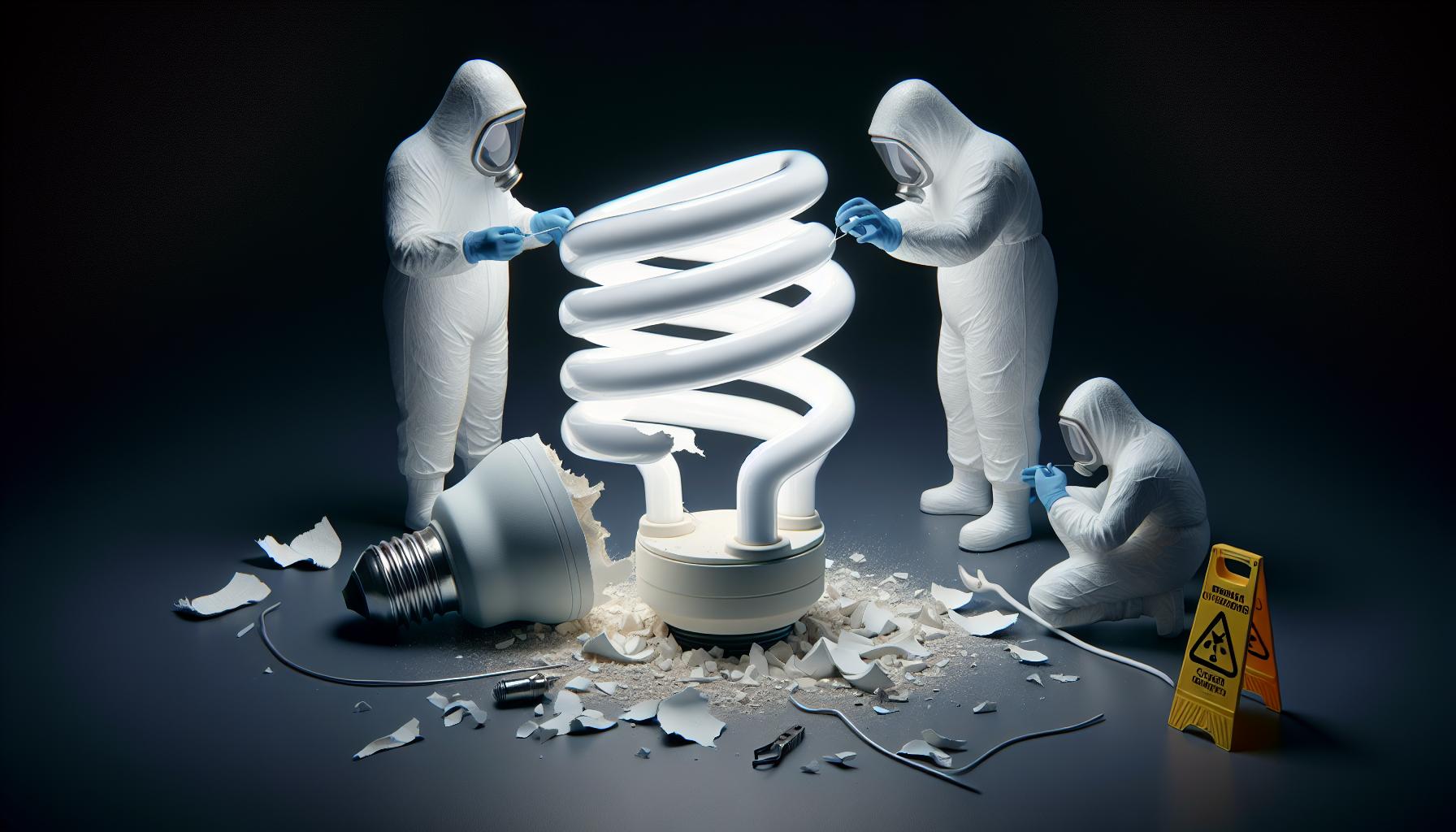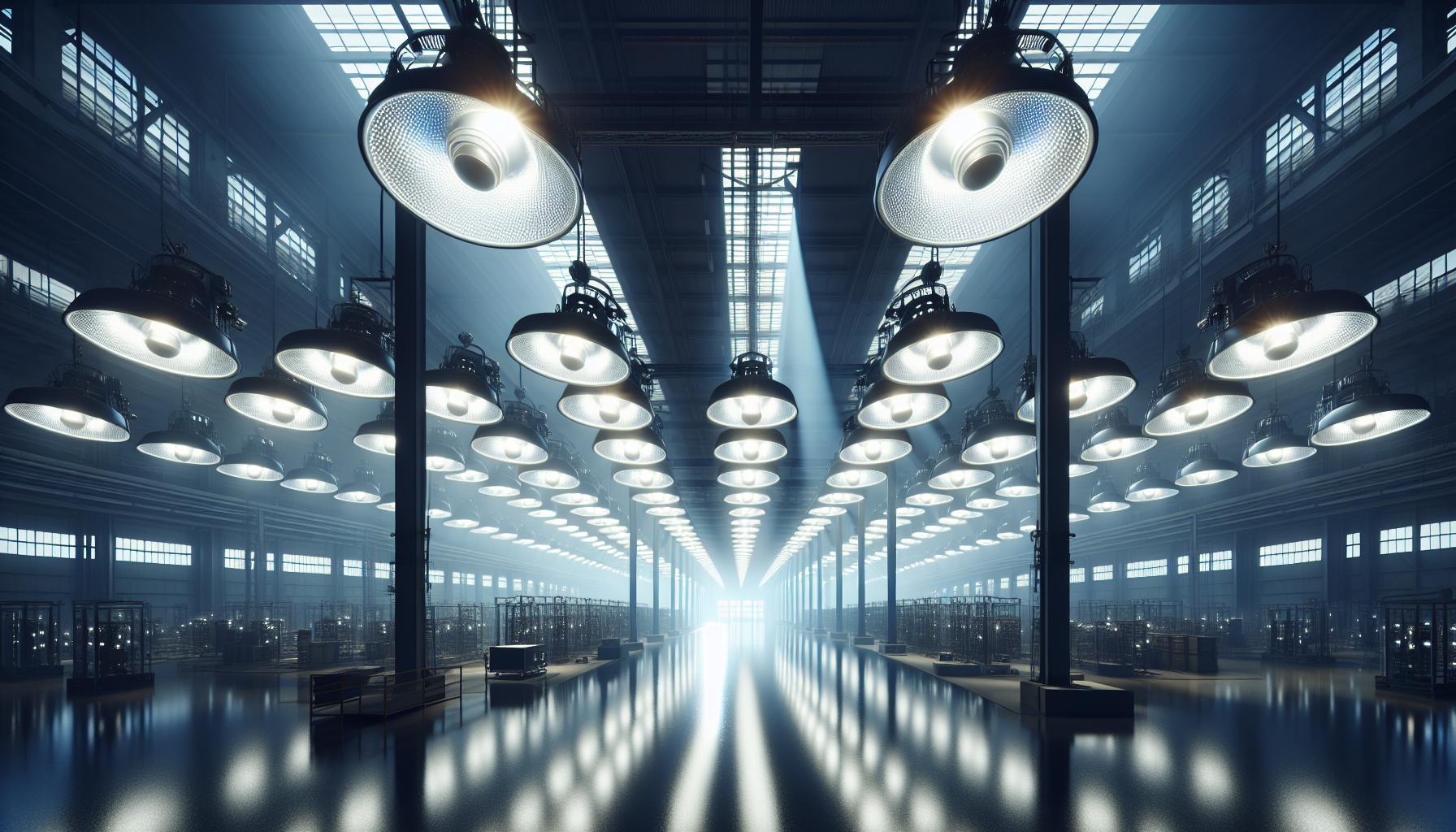Ever wondered why you’re told to be extra careful when a light bulb breaks? It’s not just about avoiding a sharp mess; some bulbs contain mercury, a toxic element that requires special handling. You’ve likely used these bulbs in your home or office, but do you know which ones pose a risk?

Let’s shed some light on the subject. From the familiar flicker of a fluorescent tube to the compact shape of a CFL, mercury is a key player in several types of light bulbs. Knowing which ones can help you handle them safely and dispose of them responsibly. So, let’s dive in and illuminate the facts about mercury in light bulbs.
The Risk of Mercury in Light Bulbs
When you’re screwing in a light bulb or flipping the light switch, you’re probably not thinking about the elements inside that glass sphere. But here’s a bright idea: some light bulbs contain mercury—a fact that warrants attention. Mercury is a heavy metal that, even in small amounts, poses environmental and health risks. It can be harmful to your nervous system, immune system, and kidneys, and it’s especially dangerous for children and pregnant women.
The concern is not just while the bulbs are intact and illuminating your spaces. The real issue arises when these bulbs break or reach the end of their life. If not handled correctly, the mercury can escape and eventually find its way into the water supply and the food chain, specifically affecting fish and those who consume them. This is why, as a DIY enthusiast and light aficionado, you need to be clued up on the types of bulbs in your home and their safe disposal.
Here’s a quick snapshot of light bulbs that commonly contain mercury:
- Compact Fluorescent Lamps (CFLs)
- Linear Fluorescent Tubes
- High-Intensity Discharge (HID) Lamps
Most incandescent bulbs and light-emitting diodes (LEDs) are mercury-free, but don’t let your guard down just yet. Always check the packaging or manufacturer’s information for confirmation.
Your role in mitigating the risk of mercury pollution is crucial. When a mercury-containing bulb goes out, it’s your cue to shine. Participate in recycling programs and treat these bulbs as special waste. Local retailers and waste collection agencies often offer recycling options. By staying informed and proactive about the presence of mercury in your lighting choices, you’re not just tweaking your home’s ambiance—you’re safeguarding the environment and your health.
Remember, awareness is the first step towards safe handling. Keep that in mind next time you’re basking in the glow of your favorite reading lamp or spotlighting your latest home DIY project.
Types of Light Bulbs Containing Mercury

As you dive deeper into the world of lighting, it’s essential to recognize which types of bulbs to handle with care due to their mercury content. Compact fluorescent lamps (CFLs), the curly bulbs you’ve seen that save energy, contain a small amount of mercury that can be released if the bulb breaks. They’ve been a popular energy-saving option for years, and while their efficiency is commendable, their disposal requires extra attention.
In addition to CFLs, fluorescent tubes – the long, stick-like bulbs used in many office settings and garages – also contain mercury. These tubes come in various lengths and diameters, commonly from the skinny T5s to the thicker T8s and T12s. Just like CFLs, these tubes need to be recycled properly to keep mercury out of landfills.
But that’s not all. High-intensity discharge (HID) bulbs, often used for outdoor lighting and in large indoor spaces like gyms, hold a larger amount of mercury. HID bulbs, including metal halide, high-pressure sodium, and mercury vapor bulbs, are powerful performers but come with the responsibility to dispose of them thoughtfully.
For those cozy at-home projectors or certain types of stage lighting, ultra-high performance (UHP) bulbs might be familiar. These specialized bulbs are yet another category where mercury is used. Whether you’re replacing a bulb in your home theater or updating the lighting in an auditorium, being aware of their mercury content is pivotal.
Here’s a quick rundown:
- Compact Fluorescent Lamps (CFLs)
- Fluorescent Tubes (like T5, T8, and T12)
- High-Intensity Discharge (HID) Bulbs (including metal halide, high-pressure sodium, mercury vapor)
- Ultra-High Performance (UHP) Bulbs
Remember that not all light bulbs carry the same level of mercury risk. LED bulbs, for instance, are a safer choice as they typically do not contain mercury and also offer energy efficiency. However, always check the packaging or manufacturer’s details for your specific bulb type to make sure. Partaking in recycling programs becomes not just a choice, but a necessity when dealing with these types of bulbs; your commitment to proper disposal paves the way for a healthier environment and a safer home.
Fluorescent Tubes: A Common Culprit
« What Light Bulbs Work with Smart Life App: Unveil Compatible Models Now
Do You Need a Special Light Bulb for an Oven? Find Out What Expert Bakers Use »

When you’re scanning the aisles for new bulbs, you might easily breeze past fluorescent tubes without a second thought. After all, they’re a staple in garages, kitchens, and office spaces. But the reality is that these long, slender tubes are often loaded with mercury. Now, you might wonder why that’s such a big deal. Mercury, despite being essential for the function of these lights, poses environmental and health risks when the bulbs break or are improperly disposed of.
Let’s break it down a bit. Fluorescent tubes function by exciting mercury vapor, which in turn emits ultraviolet light. This light then causes a phosphor coating inside the tube to glow, providing the visible light you’re familiar with. While the amount of mercury in each tube may be small, usually around 4 milligrams, the collective impact of improperly discarded tubes is nothing to ignore.
Here’s an essential tip: take a moment to look for the Hg symbol on packaging or in the product details. Say you’re a DIY guru upgrading your workshop—identifying that symbol spells the difference between regular trash and items requiring special handling.
Your involvement doesn’t end after installation. When they burn out, you’re responsible for seeing them through to a proper farewell. Most local waste management authorities offer recycling programs aiming to safely contain mercury. And if you’re still clinging to the glow of your fluorescents, maybe it’s time to rethink. Swapping them out for LEDs not only reduces the mercury worry but also gives you improved energy efficiency and a longer-lasting light source.
Just remember, whether you’re overhauling your home’s lighting or tossing one solitary bulb, understanding the quirks and necessities of fluorescent tubes can help you take care of your space—and the planet—a little better. Keep up with recycling programs in your area and continue to make informed choices about the products you bring into your home.
Compact Fluorescent Light (CFL) Bulbs: A Compact Danger

Compact Fluorescent Light (CFL) bulbs were once the beacon of energy efficiency, nudging their way into homes with promises of lower electricity bills. You might’ve even cheered them on, hailing their compact design as a brilliant blend of innovation and environmental stewardship. But lurking within their spiraling tubes is something far less celebratory: mercury.
Understanding the mercury content in CFL bulbs is essential. Each bulb contains about 4 milligrams of mercury, a toxic element that can wreak havoc on both health and environment if released. To put this into perspective, it’s a small amount, about enough to cover the tip of a pen, but with over 270 million people in the US, widespread use can lead to significant mercury pollution.
Here’s a compact fact for you: the EPA recommends that if a CFL bulb breaks in your home, you should take rigorous steps to clean it up without spreading the mercury. This includes airing out the room and carefully picking up fragments without touching them directly. As a DIY enthusiast, chances are you’re ready for such challenges, but it’s vital to handle bulbs with care to avoid breakage.
While these bulbs are a smarter choice than their incandescent ancestors regarding energy consumption, their potential hazard makes them less ideal for a risk-free home. After all, your passion for home projects probably doesn’t include mercury cleanup.
With the rise of LED technology, a shift in the market is visible. LEDs offer similar benefits of energy savings without the dangers of mercury, presenting a safer, more eco-friendly option. When shopping for new bulbs, you’re now looking beyond mere wattage and lifespan. You’re considering the health implications and the environmental impact of your lighting choices.
Remember to participate in recycling programs and dispose of CFL bulbs responsibly. Don’t just trash them—proper disposal ensures mercury is contained and won’t harm the ecosystem. As your lightbulb wisdom expands, integrate this eco-conscious habit seamlessly into your DIY projects and home upgrades.
High-Intensity Discharge (HID) Lamps: Not Just for Cars

You might associate HID lamps primarily with the bright headlights seen in many vehicles, but their use extends well beyond the roadway. HIDs have been lighting up our lives in more ways than you might realize. These powerful sources of light are often employed in large spaces such as gymnasiums, outdoor playing fields, and warehouses due to their impressive area coverage and high efficiency.
But here’s something that may not have crossed your mind: HID lamps contain mercury. That’s right, much like the CFLs you’re familiar with, HIDs are on the list of lighting technologies that require careful handling and proper disposal. The mercury content allows these lamps to produce a more intense light, but it also raises health and environmental concerns similar to those posed by CFLs.
When thinking about home DIY projects, HID lamps might not be your go-to choice due to their intense brightness and larger size. However, some enthusiasts find inventive ways to incorporate HID lighting into their home projects, often for areas that require strong, directed light over a considerable distance. If you’re considering using HIDs at home, be mindful of their mercury content. Here are a couple of HID lamp facts that might illuminate their appeal:
- Energy Efficiency: They are notable for their energy-saving qualities, offering more light per watt compared to fluorescent and incandescent bulbs.
- Longevity: HID lamps typically have a longer lifespan, reducing the frequency of replacements.
Despite these upsides, you must also weigh the environmental implications. If an HID lamp breaks, the mercury within can vaporize and pose health risks if inhaled. It necessitates a meticulous cleanup process and proper ventilation to minimize exposure.
Switching to LED technology might be more conducive for residential spaces, not only for its safety profile but also for its versatility and ever-improving light quality. LEDs shine when it comes to their variety in color temperatures and styles, suitability for dimming, and compatibility with smart home systems.
Remember, when handling or disposing of any light bulb with mercury, engage with local recycling programs and adhere to specific guidelines to ensure the well-being of your community and the welfare of the environment.
Conclusion
You’ve seen the risks that come with HID lamps and their mercury content. It’s crucial you handle these bulbs with care, especially during DIY projects. Remember, if a bulb breaks, prioritize proper cleanup and ventilation to minimize exposure. Meanwhile, LED lights offer a safer, more adaptable lighting solution for your home. Don’t forget to do your part for the environment by recycling and following disposal guidelines. Your choices can make a significant difference in safeguarding both your health and the planet.
Frequently Asked Questions
What are High-Intensity Discharge (HID) lamps and where are they commonly used?
HID lamps are a type of lighting that contains mercury and is often used in vehicles, gyms, and warehouses due to their powerful light output.
What are the environmental and health risks of HID lamps?
HID lamps pose risks due to the mercury they contain, which can be harmful to both the environment and human health if the lamps are broken or improperly disposed of.
Can HID lamps be used in residential DIY projects?
While HID lamps can be used for home DIY projects, they require careful handling due to their mercury content, and one needs to be cautious about proper cleanup and ventilation in case of breakage.
What are the suggested alternatives to HID lamps for residential use?
LED technology is recommended as a safer and more versatile lighting option for residential spaces, due to its lower environmental impact and absence of harmful substances like mercury.
Why is it important to recycle HID lamps and how should they be disposed of?
Recycling HID lamps is crucial to prevent mercury from contaminating the environment. It is important to follow specific guidelines for disposal, such as participating in recycling programs that handle hazardous materials properly.




